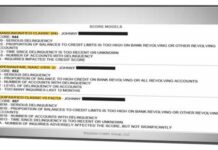Before Sending Letters rules to follow :
Sending dispute letters to your creditors and the credit bureaus is a big part of the process of improving your credit score. The below important rules should always be followed. These rules are designed to improve your chances of a favorable result. If you do not follow these rules you are likely to encounter headaches. You will likely get stall tactic form letters from the credit bureaus. Your letters may be altogether rejected.
You may cause more harm than good.
Follow these rules!
All mail being sent to the credit bureaus and/or creditors should be sent certified mail with return receipt. It is important that we create a paper trail and keep detailed records of when and where things were mailed.
On day 31 following them signing for your letter, print out a copy of your report —if the bureaus are not showing the account in dispute, they have violated the Fair Credit Reporting Act and you now have leverage.
Always include a copy of your Drivers License, Social Security Card, AND a piece of mail that verifies your mailing address. A utility bill typically works well.
For the Mailing Address dispute letters; include all above and ONE additional piece of mail. (Two total pieces of mail).
Always fill in any sections in Red on the dispute sample sending letters provided in the course.
The Personal Information letter includes [Social Security # / Date of Birth / Employer History / Names and Aliases]. In the event you need to correct more than one of these items include multiple correction requests in this letter.
Credit Bureau Mailing Addresses:
Equifax
P.O. Box 7404256
Atlanta, GA
30374-0256
Experian
Dispute Department
P.O. Box 9701 Allen,
TX 75013
TransUnion
Consumer Solutions
P.O. Box 2000
Chester, PA
19022-2000
For direct-to-creditor letters you will need to find the mailing addresses for those companies. These addresses can typically be found on the credit report either within the account information itself, or at the end of the report.
It is not necessary to put your signature on a dispute letter.
Did you know?
When it comes to impact on your score, there is no difference between a paid collection with a $0 balance and one with a $1,000,000 balance.
A collection’s negative impact on your score is measured within the algorithm by looking at the way the account is coded and the “date of last activity”. An account coded as “O-9” or “I-9” or “R-9” would indicate a collection or charge-off type of account to the score calculator (algorithm). Once the score calculator knows there is a collection, the next thing they want to know is, ‘how much should this collection hurt the score?’ —this is where the date of last activity comes into play.
The more recent the date of last activity,
the more it hurts the score. How does the date of last activity get reset, you ask? — By you making a payment. So, yes, paying a collection hurts your score! It’s not a fair system. We always recommend making sure a debt is validated prior to even considering paying it. If it can’t be validated it must be removed. If it is valid, if possible, offer payment in full in exchange for a letter of deletion. We’ll talk more about this later.
Also factoring into payment history is old accounts that are now paid off but have old late payments or derogatory history. Simply having a $0 balance on an account does not mean that the account’s history is not negatively impacting the score.
We will also be discussing how to work to remove these accounts later. Public Records such as Bankruptcy, Tax Liens, and Judgements also negatively impact the payment history section of the score. Recent changes in credit scoring eliminated the reporting of much of the tax lien and judgement data to the credit bureaus.
Bankruptcies are commonly misreported on credit reports. For instance, your chapter 7 was discharged and included 27 accounts, yet your credit report shows 17 accounts as open/active charge off or collection accounts. Only 10 are properly reported as included in bankruptcy. Our online courses walk you through the process of identifying and challenging specific accounts for removal.






















